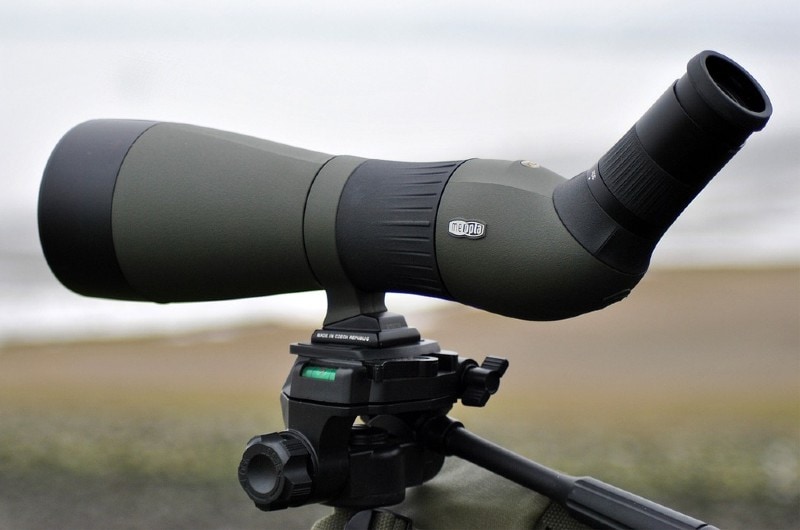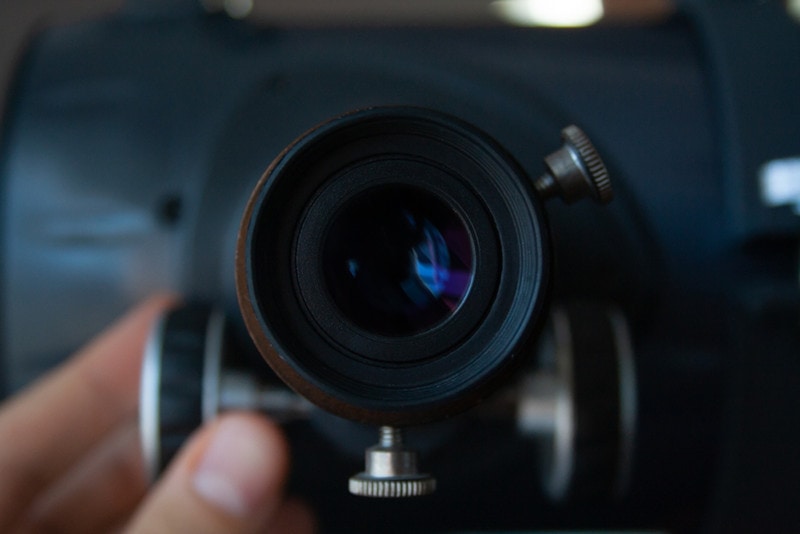What Do All the Numbers Mean on a Spotting Scope?
Last Updated on

Spotting scopes are a great tool to aid you in viewing wildlife, looking up at the night sky, surveying an area, or seeing distant objects in great detail. When you look through your new spotting scope, you might notice a bunch of numbers that are shown on the viewfinder’s display.
But what do all the numbers and symbols mean? Can they help you have a better birding or stargazing experience? Let’s find out in the details below!

Magnification and Lens Size
If you take a glance at the first section of a spotting scope’s specifications, you’ll most likely see a few numbers that show a range and multiplier. For example, the range may show 20-60×60 or 15-45×80. These numbers indicate the minimum and maximum magnification range of the scope. Keep in mind that these indicate that the product is a zooming scope. Otherwise, it may not show a dash and instead has a single number, which means it’s a fixed lens (one focal length).
The numbers connected by a dash (i.e., 20–60) mean how many times larger the subject you’re looking at will appear in relation to what it would look like without the spotting scope. Therefore, if the second number shows 60, the object in view will be 60 times larger than if you were to use your unaided eye.
However, the last number, which is illustrated after the ‘x’, shows the objective lens size in millimeters. These parameters are important if you want to know how far you’ll be able to see or what you’ll be able to use the scope for.

Eye Relief
One of the features of a spotting scope that is often overlooked is eye relief. This is essentially the distance, or how far away your eye needs to be in order to fully see what’s being displayed on the spotting scope. Moving the eye closer or further from the eye relief distance will result in the image being blurry or unviewable.
Measured in millimeters, this variable is larger when the magnification power is on the low-end. Evidently, the number will be smaller with a more extreme magnification power. You should be able to find this one in the specifications section if you’re shopping around.
Field of View (FOV)
FOV is a common term we use to describe the amount of area that can be seen when viewing an image through an optical instrument. At the widest view, you can visibly see more stuff in the image, but if zoomed in to its maximum rating, you can hone in on a subject and cut all of the unnecessary clutter out of sight.
The number that’s displayed reference’s what the human eye’s FOV is in relation to the scope’s power. For example, it may show ‘10x’, which consequently means 10x the field of view that our eyes’ can see: an angle of 210°.

Dimensions and Weight
The overall size and weight of a spotting scope may be inscribed on the outer frame or in the description of its product listing. Height, width, and length are shown in inches, in addition to the item’s weight in pounds. There isn’t much else to it!

Conclusion
We hope you learned something about all those numbers you see on your spotting scope. Now that you have a better understanding, you can use those numbers to your advantage when looking at wildlife or up at the night sky.
Featured Image Credit: leenheer, Pixabay
About the Author Robert Sparks
Robert’s obsession with all things optical started early in life, when his optician father would bring home prototypes for Robert to play with. Nowadays, Robert is dedicated to helping others find the right optics for their needs. His hobbies include astronomy, astrophysics, and model building. Originally from Newark, NJ, he resides in Santa Fe, New Mexico, where the nighttime skies are filled with glittering stars.
Related Articles:
How to Clean a Refractor Telescope: Step-by-Step Guide
How to Clean a Telescope Eyepiece: Step-by-Step Guide
How to Clean a Rifle Scope: 8 Expert Tips
Monocular vs Telescope: Differences Explained (With Pictures)
What Is a Monocular Used For? 8 Common Functions
How to Clean a Telescope Mirror: 8 Expert Tips
Brightfield vs Phase Contrast Microscopy: The Differences Explained
SkyCamHD Drone Review: Pros, Cons, FAQ, & Verdict
